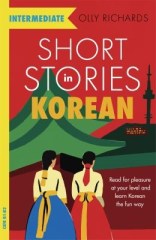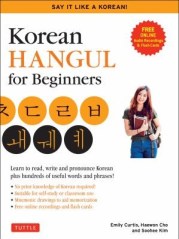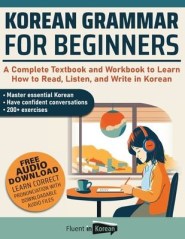 Learning Chinese opens doors to understanding a rich and ancient culture and a language that is increasingly relevant in our globalized world. Mandarin Chinese, the most widely spoken language in the world, boasts over 1.1 billion native speakers, primarily in China, Taiwan, and Singapore, along with Macao, Hong Kong, Malaysia, and Indonesia (worlddata.info). Mandarin Chinese is also spoken in at least 21 other countries as a mother tongue by a part of the population. The Wu and Min dialects of Chinese each have upwards of 80 million native speakers, and both languages are only spoken in Taiwan and some regions of China. There are many vibrant Chinese-speaking communities or “Chinatowns” across the world, including in the United States, the United Kingdom, Nigeria, and Madagascar (worldpopulationreview.com).
Learning Chinese opens doors to understanding a rich and ancient culture and a language that is increasingly relevant in our globalized world. Mandarin Chinese, the most widely spoken language in the world, boasts over 1.1 billion native speakers, primarily in China, Taiwan, and Singapore, along with Macao, Hong Kong, Malaysia, and Indonesia (worlddata.info). Mandarin Chinese is also spoken in at least 21 other countries as a mother tongue by a part of the population. The Wu and Min dialects of Chinese each have upwards of 80 million native speakers, and both languages are only spoken in Taiwan and some regions of China. There are many vibrant Chinese-speaking communities or “Chinatowns” across the world, including in the United States, the United Kingdom, Nigeria, and Madagascar (worldpopulationreview.com).
 The history of the Chinese language dates back over 4,000 years, with the earliest written records found on oracle bones from the Shang dynasty (c. 1600–1046 BCE). Over centuries, the language evolved through various stages, including Old Chinese, Middle Chinese, and Modern Standard Chinese. The development of a standardized written form, based on the Beijing dialect, was a significant step in unifying the languages spoken in China – a family of dialects with significant regional variations. Mandarin, the official language of China, is the most widely spoken, with approximately 70% of the population using it as their primary language. Other major dialects include Cantonese (spoken in Guangdong province and Hong Kong), Wu (including Shanghainese), Min (including Hokkien), and Xiang. Each dialect has its own unique phonetic, lexical, and grammatical features, and many are not mutually intelligible (fluentu.com). Other than in China, the Chinese language is spoken in 21 other countries as a mother tongue by at least a part of the population including many neighboring countries in Asia and surrounding regions (listed above), but also further south to Australia and New Zealand and parts of Oceania. The language is also spoken in Chinese communities or “Chinatowns” across the world, including in the United States and Canada, the United Kingdom and other locations in Europe, along with a small number of countries in Central and South America as well as some African nations like Nigeria and Madagascar.
The history of the Chinese language dates back over 4,000 years, with the earliest written records found on oracle bones from the Shang dynasty (c. 1600–1046 BCE). Over centuries, the language evolved through various stages, including Old Chinese, Middle Chinese, and Modern Standard Chinese. The development of a standardized written form, based on the Beijing dialect, was a significant step in unifying the languages spoken in China – a family of dialects with significant regional variations. Mandarin, the official language of China, is the most widely spoken, with approximately 70% of the population using it as their primary language. Other major dialects include Cantonese (spoken in Guangdong province and Hong Kong), Wu (including Shanghainese), Min (including Hokkien), and Xiang. Each dialect has its own unique phonetic, lexical, and grammatical features, and many are not mutually intelligible (fluentu.com). Other than in China, the Chinese language is spoken in 21 other countries as a mother tongue by at least a part of the population including many neighboring countries in Asia and surrounding regions (listed above), but also further south to Australia and New Zealand and parts of Oceania. The language is also spoken in Chinese communities or “Chinatowns” across the world, including in the United States and Canada, the United Kingdom and other locations in Europe, along with a small number of countries in Central and South America as well as some African nations like Nigeria and Madagascar.
In the United States, approximately 3.5 million people speak a form of Chinese, including Mandarin and Cantonese, making it the third most spoken language in the country (after English and Spanish). The Chinese speaking population of the U.S. is highly concentrated in the New York (549,000), Los Angeles (399,000) and San Francisco (334,000) metro areas (Census.gov). Chinese has influenced various aspects of society, particularly in areas with significant Chinese-speaking populations. Chinese Americans have established schools and cultural institutions to preserve language and heritage. Additionally, the growing economic and political ties between the U.S. and China have increased the demand for Chinese language skills in business, diplomacy, and academia. This trend reflects the broader global importance of Chinese as a key language in international relations and commerce.
In Iowa, there are approximately 6,600 speakers of Chinese, mostly in cities like Des Moines, Ames, and Iowa City, as well as Cedar Rapids, indicating a growing population particularly in areas with academic institutions and businesses with an international footprint (Language Map Data Center). There are several colleges and universities in Iowa that offer Chinese Language Programs as well as a number of student associations with a focus on China and Chinese culture. In Johnston, Iowa, just northwest of Des Moines, the Iowa Chinese Language School (ICLS) offers Chinese language classes and cultural activities for ages 4-adult, focusing not just on the Chinese language but also aspects of Chinese culture like art, dance, and sports, for a well-rounded learning experience. Iowa is also home to the Chinese Culture Center of America (cccaiowa.org) and the Chinese Association of Iowa (iowachinese.us), which offers a connection to various events including Chinese New Year celebrations in the region. And, the Iowa City Area Chinese Association is active on Facebook.
In Scott County, there are fewer than 500 speakers of Chinese, with about 130 speakers of the language residing in Davenport (IowaDataCenter.org). Davenport even has a “sister city” relationship with Langfang, China. Des Moines, Dubuque, and Cedar Rapids also have Chinese “sister cities”. Beyond Davenport, but in the Quad Cities region, Augustana College offers a Chinese minor and Asian Studies major, including four years of language instruction. Rivermont Collegiate (Upper School/High School) in Bettendorf has offered Chinese language classes to its students since 2003. And, recently, Muscatine High School began offering a Chinese language (Mandarin) class as well.
Learning Chinese offers numerous benefits. Professionally, it can enhance career opportunities in international business, diplomacy, and translation, especially given China’s significant role in the global economy. Culturally, it provides access to a vast array of literature, philosophy, and art, enriching one’s understanding of Chinese heritage. Additionally, as China continues to expand its influence, proficiency in Chinese can facilitate communication and collaboration in various fields. With millions of speakers both globally and within the United States, including Iowa, and a rich tapestry of dialects to explore, the Chinese language offers a unique and rewarding linguistic journey that will give you a strategic skill in an interconnected world.
Would you like to explore learning Chinese? Check out some of the FREE resources available to you at The Library. See our online catalog or ask a Librarian for more resources.
FOR A QUICK INTRODUCTION TO THE LANGUAGE:



Get started in Mandarin Chinese
How to learn Chinese : without even trying!
Mandarin Chinese the easy way
FOR A MORE LAID-BACK APPROACH:


Chinese stories for language learners : a treasury of proverbs and folktales in Chinese and English
Chinese short stories for beginners : 20 captivating short stories to learn Chinese & grow your vocabulary the fun way!
IF YOU ARE A VISUAL LEARNER:






Mandarin Chinese picture dictionary : learn 1,500 key Chinese words and phrases
Hanmoji handbook: your guide to the Chinese language through emoji
Chinese-English Bilingual visual dictionary
Chinese character writing
Chinese characters : learn & remember 2,178 characters and their meanings
Learning Chinese characters
MORE COMPREHENSIVE LANGUAGE COURSES:



Beginner’s Chinese
Essential Chinese grammar : write and speak Chinese like a native!
And, as a Davenport Public Library cardholder, you have FREE access to the language learning program, Mango Languages. Please check back for more resources including a more complete language learning course (in book form) for Chinese that will soon be added to our collection. In the meantime, Mango Languages is a great place to start.
FOR THOSE WHO PLAN TO TRAVEL:





Traveler’s language guides. Mandarin
Rough Guide Mandarin Phrasebook
Lonely Planet Mandarin phrasebook & CD : read, listen and practise
Chinese PhraseFinder and dictionary
Cantonese Chinese phrasebook & dictionary
NEXT MONTH… LEARN A LANGUAGE — Part 10 — ESL
.












































 English is considered the global language, or lingua franca, which means it is often used as a common language between speakers of different native languages in business, education, and international communication. Because of this, both children and adults around the world invest significant time and resources into mastering the language for many reasons, but particularly for better educational and professional opportunities. Learning English as a Second Language (ESL) or English as a Foreign Language (EFL) has become increasingly important in today’s interconnected world. According to the British Council in 2023, over 1.5 billion people globally are currently learning English, making it the most widely studied language on the planet. As English continues to dominate international media, science, and diplomacy, learning the language provides valuable advantages.
English is considered the global language, or lingua franca, which means it is often used as a common language between speakers of different native languages in business, education, and international communication. Because of this, both children and adults around the world invest significant time and resources into mastering the language for many reasons, but particularly for better educational and professional opportunities. Learning English as a Second Language (ESL) or English as a Foreign Language (EFL) has become increasingly important in today’s interconnected world. According to the British Council in 2023, over 1.5 billion people globally are currently learning English, making it the most widely studied language on the planet. As English continues to dominate international media, science, and diplomacy, learning the language provides valuable advantages.















































































 Learning Chinese opens doors to understanding a rich and ancient culture and a language that is increasingly relevant in our globalized world. Mandarin Chinese, the most widely spoken language in the world, boasts over 1.1 billion native speakers, primarily in China, Taiwan, and Singapore, along with Macao, Hong Kong, Malaysia, and Indonesia (worlddata.info). Mandarin Chinese is also spoken in at least 21 other countries as a mother tongue by a part of the population. The Wu and Min dialects of Chinese each have upwards of 80 million native speakers, and both languages are only spoken in Taiwan and some regions of China. There are many vibrant Chinese-speaking communities or “Chinatowns” across the world, including in the United States, the United Kingdom, Nigeria, and Madagascar (worldpopulationreview.com).
Learning Chinese opens doors to understanding a rich and ancient culture and a language that is increasingly relevant in our globalized world. Mandarin Chinese, the most widely spoken language in the world, boasts over 1.1 billion native speakers, primarily in China, Taiwan, and Singapore, along with Macao, Hong Kong, Malaysia, and Indonesia (worlddata.info). Mandarin Chinese is also spoken in at least 21 other countries as a mother tongue by a part of the population. The Wu and Min dialects of Chinese each have upwards of 80 million native speakers, and both languages are only spoken in Taiwan and some regions of China. There are many vibrant Chinese-speaking communities or “Chinatowns” across the world, including in the United States, the United Kingdom, Nigeria, and Madagascar (worldpopulationreview.com). The history of the Chinese language dates back over 4,000 years, with the earliest written records found on oracle bones from the Shang dynasty (c. 1600–1046 BCE). Over centuries, the language evolved through various stages, including Old Chinese, Middle Chinese, and Modern Standard Chinese. The development of a standardized written form, based on the Beijing dialect, was a significant step in unifying the languages spoken in China – a family of dialects with significant regional variations. Mandarin, the official language of China, is the most widely spoken, with approximately 70% of the population using it as their primary language. Other major dialects include Cantonese (spoken in Guangdong province and Hong Kong), Wu (including Shanghainese), Min (including Hokkien), and Xiang. Each dialect has its own unique phonetic, lexical, and grammatical features, and many are not mutually intelligible (fluentu.com). Other than in China, the Chinese language is spoken in 21 other countries as a mother tongue by at least a part of the population including many neighboring countries in Asia and surrounding regions (listed above), but also further south to Australia and New Zealand and parts of Oceania. The language is also spoken in Chinese communities or “Chinatowns” across the world, including in the United States and Canada, the United Kingdom and other locations in Europe, along with a small number of countries in Central and South America as well as some African nations like Nigeria and Madagascar.
The history of the Chinese language dates back over 4,000 years, with the earliest written records found on oracle bones from the Shang dynasty (c. 1600–1046 BCE). Over centuries, the language evolved through various stages, including Old Chinese, Middle Chinese, and Modern Standard Chinese. The development of a standardized written form, based on the Beijing dialect, was a significant step in unifying the languages spoken in China – a family of dialects with significant regional variations. Mandarin, the official language of China, is the most widely spoken, with approximately 70% of the population using it as their primary language. Other major dialects include Cantonese (spoken in Guangdong province and Hong Kong), Wu (including Shanghainese), Min (including Hokkien), and Xiang. Each dialect has its own unique phonetic, lexical, and grammatical features, and many are not mutually intelligible (fluentu.com). Other than in China, the Chinese language is spoken in 21 other countries as a mother tongue by at least a part of the population including many neighboring countries in Asia and surrounding regions (listed above), but also further south to Australia and New Zealand and parts of Oceania. The language is also spoken in Chinese communities or “Chinatowns” across the world, including in the United States and Canada, the United Kingdom and other locations in Europe, along with a small number of countries in Central and South America as well as some African nations like Nigeria and Madagascar.

































 Globally, the Korean language is spoken by over 80 million people, primarily in South Korea (51.7 million) and North Korea (26.4 million). Beyond the Korean Peninsula, significant Korean-speaking communities exist due to historical migration, notably China with approximately 2 million speakers. Japan hosts about 500,000 Korean speakers, mainly descendants of Koreans who migrated during the early 20th century. Further abroad, the United States is home to around 1.8 million Korean speakers, with large communities in cities like Los Angeles, New York, and Washington D.C. Other countries with notable Korean-speaking populations include Russia, with approximately 250,000 speakers, and Canada, where around 218,000 individuals speak Korean (worlddata.info). Australia has a Korean-speaking population of about 102,000, primarily residing in New South Wales. Smaller communities are also found in countries such as Uzbekistan, Kazakhstan, and various European nations. These global communities maintain the Korean language through cultural institutions, schools, and media, preserving their linguistic heritage and contributing to the worldwide spread of Korean culture (britannica.com and pathtokorean.com).
Globally, the Korean language is spoken by over 80 million people, primarily in South Korea (51.7 million) and North Korea (26.4 million). Beyond the Korean Peninsula, significant Korean-speaking communities exist due to historical migration, notably China with approximately 2 million speakers. Japan hosts about 500,000 Korean speakers, mainly descendants of Koreans who migrated during the early 20th century. Further abroad, the United States is home to around 1.8 million Korean speakers, with large communities in cities like Los Angeles, New York, and Washington D.C. Other countries with notable Korean-speaking populations include Russia, with approximately 250,000 speakers, and Canada, where around 218,000 individuals speak Korean (worlddata.info). Australia has a Korean-speaking population of about 102,000, primarily residing in New South Wales. Smaller communities are also found in countries such as Uzbekistan, Kazakhstan, and various European nations. These global communities maintain the Korean language through cultural institutions, schools, and media, preserving their linguistic heritage and contributing to the worldwide spread of Korean culture (britannica.com and pathtokorean.com). But, according to a 2021 report from the language learning app, Duolingo, Korean is in the top 6 most popular languages to learn around the world (English, Spanish, French, German, Japanese, Italian, and Korean). The surge in interest in learning Korean is largely attributed to the global phenomenon known as the Korean Wave, or “Hallyu,” which encompasses the international popularity of Korean music, films, and television dramas. This cultural movement has significantly increased the number of non-native speakers learning Korean, as individuals seek to engage more deeply with Korean media and culture (linguakorean.com and asiasociety.org). Learning Korean opens doors to various career opportunities, especially in fields like international business, technology translation, and diplomacy. South Korea is home to global giants like Samsung, Hyundai, and LG, making knowledge of the Korean language an asset for professionals looking to engage in the East Asian market (koreatimes.com). Moreover, the U.S. government considers Korean a critical language, offering scholarships and career opportunities in agencies such as the CIA, Department of State, and NSA for individuals with Korean language skills.
But, according to a 2021 report from the language learning app, Duolingo, Korean is in the top 6 most popular languages to learn around the world (English, Spanish, French, German, Japanese, Italian, and Korean). The surge in interest in learning Korean is largely attributed to the global phenomenon known as the Korean Wave, or “Hallyu,” which encompasses the international popularity of Korean music, films, and television dramas. This cultural movement has significantly increased the number of non-native speakers learning Korean, as individuals seek to engage more deeply with Korean media and culture (linguakorean.com and asiasociety.org). Learning Korean opens doors to various career opportunities, especially in fields like international business, technology translation, and diplomacy. South Korea is home to global giants like Samsung, Hyundai, and LG, making knowledge of the Korean language an asset for professionals looking to engage in the East Asian market (koreatimes.com). Moreover, the U.S. government considers Korean a critical language, offering scholarships and career opportunities in agencies such as the CIA, Department of State, and NSA for individuals with Korean language skills.


















 The Italian language has a long and rich history in the United States. For centuries, especially during the late 19th and early 20th centuries, large numbers of Italians immigrated to the U.S. in search of a better life. They tended to settle in large cities where they established thriving Italian communities. Today, many of their descendants continue to speak Italian and maintain their cultural heritage. Roughly 764,000 people in the U.S. speak Italian at home according to the U.S. Census Bureau. New York and New Jersey have the highest number of native Italian speakers (294,000 and 116,000, respectively), but communities of Italian speakers can also be found across the country, especially in large cities like Chicago, Miami, Philadelphia, Boston, St. Louis, and Buffalo, among others. Italian is still an essential regional language in many American communities. Depending on the source, Italian is listed as high as the 4th (and as low as the 12th) most-studied foreign language in the United States. Since much language learning now occurs online or casually through an app, and not in a formal classroom setting, these numbers are difficult to confirm.
The Italian language has a long and rich history in the United States. For centuries, especially during the late 19th and early 20th centuries, large numbers of Italians immigrated to the U.S. in search of a better life. They tended to settle in large cities where they established thriving Italian communities. Today, many of their descendants continue to speak Italian and maintain their cultural heritage. Roughly 764,000 people in the U.S. speak Italian at home according to the U.S. Census Bureau. New York and New Jersey have the highest number of native Italian speakers (294,000 and 116,000, respectively), but communities of Italian speakers can also be found across the country, especially in large cities like Chicago, Miami, Philadelphia, Boston, St. Louis, and Buffalo, among others. Italian is still an essential regional language in many American communities. Depending on the source, Italian is listed as high as the 4th (and as low as the 12th) most-studied foreign language in the United States. Since much language learning now occurs online or casually through an app, and not in a formal classroom setting, these numbers are difficult to confirm. 


































































 Last month we covered the Spanish language and the resources offered by The Library. This month, we’ll take a look at French. While not a commonly spoken language here in the Quad Cities, or even in Iowa, French is the 5th most spoken language in the world. With 321 million speakers (111 million who speak it as their mother tongue), French speakers make up 3.6% of the world population. French is also the 4th most used language on the internet (Ministry for Europe and Foreign Affairs) and is one of the only languages with speakers on every continent. With 74 French-speaking countries, French is considered a world language. Only 39 countries and independent states use French as their official or common language (Worlddata.info) and the language is at least partly spoken as a mother tongue in as many as 12 other countries.
Last month we covered the Spanish language and the resources offered by The Library. This month, we’ll take a look at French. While not a commonly spoken language here in the Quad Cities, or even in Iowa, French is the 5th most spoken language in the world. With 321 million speakers (111 million who speak it as their mother tongue), French speakers make up 3.6% of the world population. French is also the 4th most used language on the internet (Ministry for Europe and Foreign Affairs) and is one of the only languages with speakers on every continent. With 74 French-speaking countries, French is considered a world language. Only 39 countries and independent states use French as their official or common language (Worlddata.info) and the language is at least partly spoken as a mother tongue in as many as 12 other countries.















